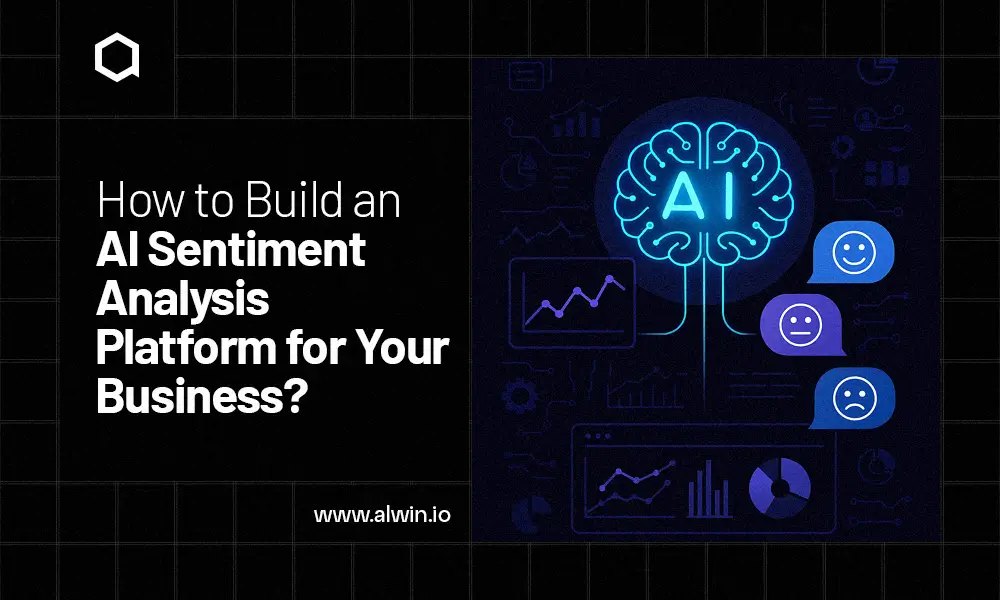Hey there! Have you ever wondered how AI can actually understand our emotions just from what we write or say online? Well, in 2026, AI sentiment analysis has taken that ability to a whole new level. It’s not just about scanning words anymore; it’s about truly understanding how people feel. From tweets to product reviews, these AI tools can sense whether customers are thrilled, annoyed, or even confused. This gives businesses a golden opportunity to really listen to their audience and react faster than ever before.
Did you know companies now use AI sentiment analysis to spot trends before they happen? Imagine a brand detecting customer frustration from online chatter long before it turns into a PR issue. That’s the power of modern AI. It scans millions of data points in seconds, helping brands make smarter, emotion-driven decisions. From improving customer service to fine-tuning marketing, sentiment insights have become every business leader’s secret weapon.
By 2026, AI isn’t just smarter, it’s practically reading the digital room. Businesses are pairing sentiment analysis with chatbots, CRM systems, and predictive analytics to gain a 360° view of their customers. It’s like having a digital mind reader that helps companies connect on a truly human level, creating happier customers, sharper strategies, and brands that always stay in tune with their audience.
AI Sentiment Analysis - What It Really Means?
AI Sentiment Analysis is the process of using artificial intelligence to detect and interpret human emotions from text, speech, or visuals. Distinct traditional models that simply tag opinions as positive, negative, or neutral, modern AI systems go deeper, understanding tone, intent, sarcasm, and emotional context for far greater accuracy.
With Natural Language Processing (NLP) and machine learning, AI tools analyze huge amounts of unstructured data, social media posts, reviews, emails, or chat messages, in real time. This helps businesses measure how customers truly feel and act quickly on those insights.
Three Key Approaches to Sentiment Analysis
Fine-Grained Analysis – Measures sentiment intensity like very positive, neutral, or negative.
Aspect-Based Analysis – Identifies opinions on specific features or aspects.
Emotion Detection – Recognizes emotions such as joy, anger, or sadness.
Why It Matters?
AI sentiment analysis helps businesses:
Predict customer churn by spotting negative trends early.
Protect brand reputation by tracking sentiment in real time.
Create personalized marketing and customer experiences based on emotional tone.
In today’s emotion-driven marketplace, understanding how and why customers feel a certain way isn’t just valuable, it’s essential for smarter business decisions.
Why 2026 Is the Year of AI Sentiment Analysis?
As we move into 2026, AI sentiment analysis has reached a tipping point. Several factors have fueled its widespread adoption: massive data availability, improved computing power, and the integration of Generative AI with emotional intelligence models. Businesses are now leveraging these systems not just for marketing, but across every department, from HR to product development.
The biggest driver of this boom is personalization. Consumers today expect brands to understand them on a personal level. AI sentiment analysis helps businesses meet that expectation by interpreting emotions at scale and tailoring interactions accordingly. It’s no longer about guessing what customers want; it’s about knowing what they feel.
For example, in retail, AI can detect negative sentiment about a product and alert the team to improve its quality. In finance, it can analyze customer interactions to detect frustration before a client churns. In healthcare, it helps professionals assess patient moods through recorded calls or feedback forms.
In short, 2026 marks the maturity of AI sentiment analysis, a year when emotional data becomes the most valuable business asset.
AI Sentiment Analysis Platform Development Company
WeAlwin is specialize in building advanced AI-driven sentiment analysis platforms for businesses across multiple industries. By combining Natural Language Processing (NLP), Machine Learning (ML), and deep learning techniques, WeAlwin develops intelligent systems that can understand, interpret, and classify human emotions expressed in text, voice, and social media content.
Applications of AI Sentiment Analysis Across Industries
AI sentiment analysis isn’t limited to one sector; it’s transforming multiple industries at once:
Retail & eCommerce: Understanding customer sentiment about products, delivery, and service to boost experience.
Finance: Detecting emotional triggers behind investment decisions or customer complaints.
Healthcare: Identifying patient emotions in telemedicine sessions or feedback to improve care.
Marketing: Crafting emotionally resonant campaigns that truly connect with audiences.
Customer Support: Real-time emotion tracking during chats or calls to adjust tone and response speed.
These applications prove one thing: emotion is the new currency, and businesses using AI to interpret it are winning big.
Why Businesses Need AI Sentiment Analysis?
Every successful business knows one golden rule: understanding customers is everything. But here’s the catch: most customers don’t always say exactly what they mean. A review might sound polite but hide frustration, or a social media comment might mix humor with complaint. Human teams can’t analyze millions of such messages daily, but AI can.
Here’s why AI sentiment analysis is a must-have for every business in 2026:
To Understand Customers on a Deeper Level
AI doesn’t just count positive or negative words; it understands context. For example, “The phone is great, but the battery dies fast” carries both praise and criticism. Sentiment AI helps you capture that complexity so you can fix what’s wrong without ignoring what’s right.
To Improve Customer Experience (CX)
When you know how customers feel, you can respond appropriately. AI sentiment tools help businesses personalize communication, resolve issues faster, and even predict customer needs before they’re voiced. Happy customers lead to loyalty, and loyalty drives growth.
To Protect Brand Reputation
In today’s online world, brand perception changes in minutes. A viral tweet or bad review can hurt credibility. AI sentiment analysis continuously monitors public sentiment about your brand, alerting teams to rising negativity before it spirals.
To Drive Smarter Marketing Decisions
What if you could know how people feel about your campaign in real time? AI sentiment analysis makes that possible. Marketers can tweak messaging, adjust tone, or refocus content instantly based on audience emotion, securing campaigns always hit the right note.
To Gain a Competitive Edge
In 2026, businesses using emotion-driven insights outperform competitors. By understanding what customers feel (not just what they say), companies can adapt faster, innovate smarter, and stay ahead in crowded markets.
Top Uses of AI Sentiment Analysis in 2026
AI sentiment analysis isn’t a one-trick pony—it’s a versatile technology with applications across every business function. Below are some of the most powerful and popular uses in 2026:
1. Social Media Monitoring and Brand Management
Social media is where emotions run wild—joy, frustration, excitement, and anger are all expressed openly. AI sentiment analysis tracks all mentions of your brand across platforms like X (formerly Twitter), Facebook, Instagram, and LinkedIn. By analyzing tone and emotion, AI can quickly identify emerging trends or crises. For instance, if thousands of people start expressing dissatisfaction after a product update, businesses can respond immediately—saving their reputation before it’s damaged.
2. Customer Support improvement
Customer service isn’t just about answering questions; it’s about understanding the emotions behind them. AI-powered systems can detect frustration, confusion, or satisfaction in real time during chats or calls. Support teams can then prioritize urgent cases or adjust their tone to match the customer’s mood. Imagine a chatbot that senses irritation and instantly connects the user with a human agent that’s emotional intelligence in action.
3. Product Development and Feedback Analysis
Every review, comment, or complaint is a goldmine of insight. AI sentiment analysis turns this feedback into actionable data. By categorizing emotions, companies can spot recurring problems or discover what customers love most about their products.For example, if customers often express excitement about a feature, the business can expand it. If they consistently mention frustration, it signals an area for improvement. This emotional feedback loop fuels smarter product innovation.
4. Market Research and Trend Prediction
Traditional market research takes weeks or months. With AI sentiment analysis, businesses can measure market mood instantly. By scanning social conversations, forums, and news sources, AI tools detect emotional patterns that signal upcoming trends. This helps companies predict market shifts before competitors even notice them. Whether it’s detecting rising enthusiasm for a new tech gadget or identifying fatigue with an existing product line, AI turns emotion into foresight.
5. Employee Sentiment and Workplace Culture
AI sentiment analysis isn’t just for customers—it’s also transforming workplaces. By analyzing employee feedback, emails, or surveys, companies can assess team morale, engagement, and satisfaction.HR leaders use these insights to build happier workplaces, address burnout early, and improve internal communication. A positive emotional climate leads to better productivity and lower turnover, proof that understanding emotion drives success both externally and internally.
The Future of AI Sentiment Analysis: Predictive Emotional Intelligence
The future of sentiment analysis lies in prediction. Emerging AI models don’t just react to emotions; they anticipate them. Predictive sentiment systems analyze patterns to forecast how customers will feel about future changes, price adjustments, or campaigns.
By 2026 and beyond, businesses will use these predictive tools to craft strategies that align with emotion before it’s expressed, staying one step ahead of customer expectations.
Partner with Wealwin to Lead the Next Generation of AI Sentiment Analysis
In today’s fast-changing digital world, understanding emotions behind data is what truly sets businesses apart. Wealwin, a global leader in blockchain and AI-driven solutions, is pioneering this change with its next-generation AI sentiment analysis technologies. With deep expertise in intelligent automation, data analytics, and enterprise AI solutions, our trusted AI Development Company helps businesses decode customer emotions and transform them into powerful business insights.
By partnering with us, Beyond traditional analytics, they can understand intent, emotion, and behavior in real time. Our advanced AI systems integrate perfectly into your existing workflows, allowing you to analyze customer feedback, market sentiment, and brand reputation instantly. This helps you make smarter, faster, and more human-centered business decisions.
At Wealwin, innovation meets empathy. We believe technology should not just process data but also understand the people behind it. Whether you’re looking to improve customer experience, predict market trends, or build emotionally intelligent AI solutions, Wealwin, your trusted AI Development Company, is here to guide you into the next generation of intelligent business.
Join hands with us and step confidently into the future — where data feels, decisions connect, and businesses grow smarter.


